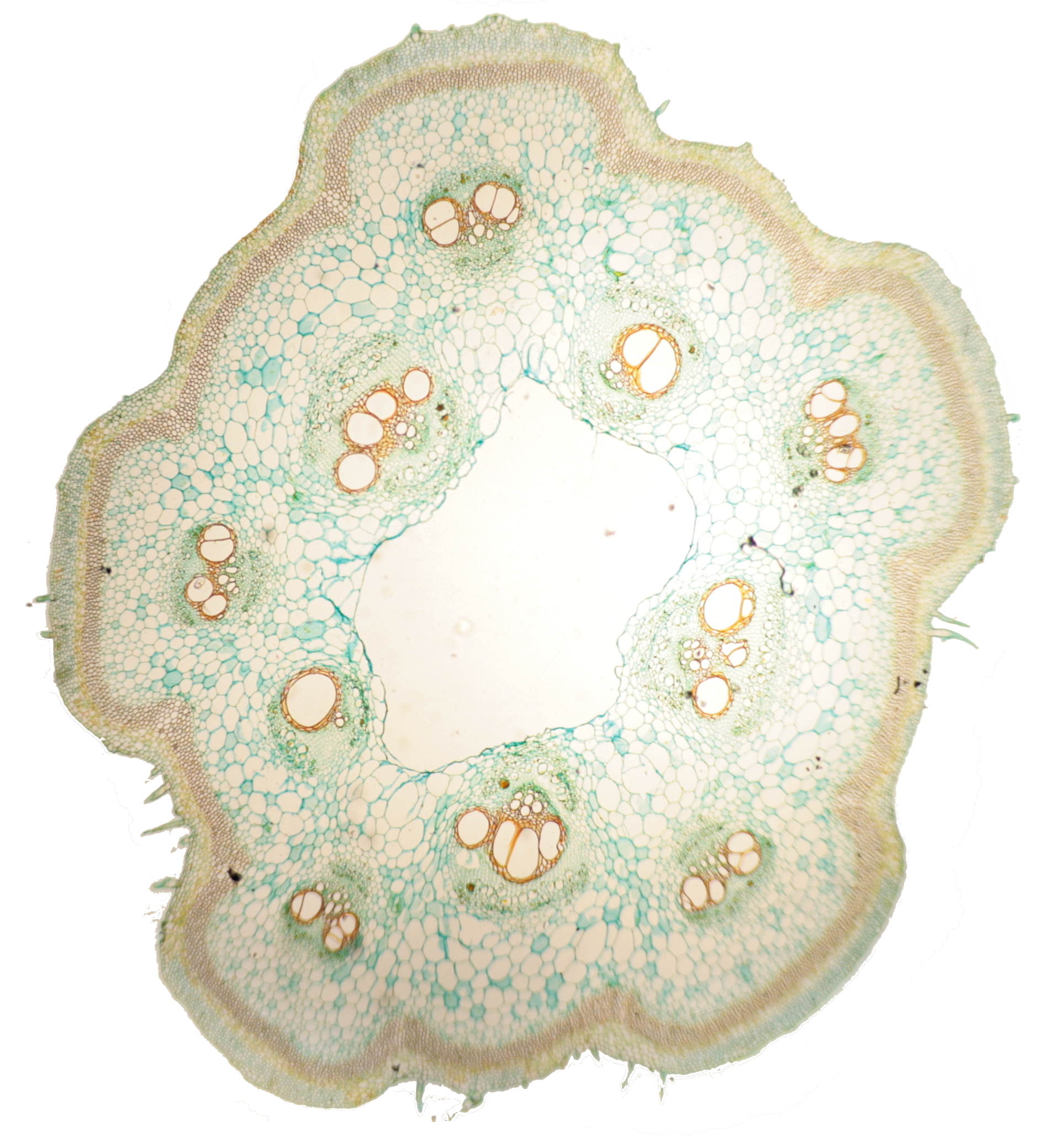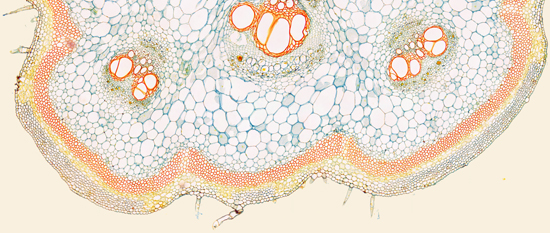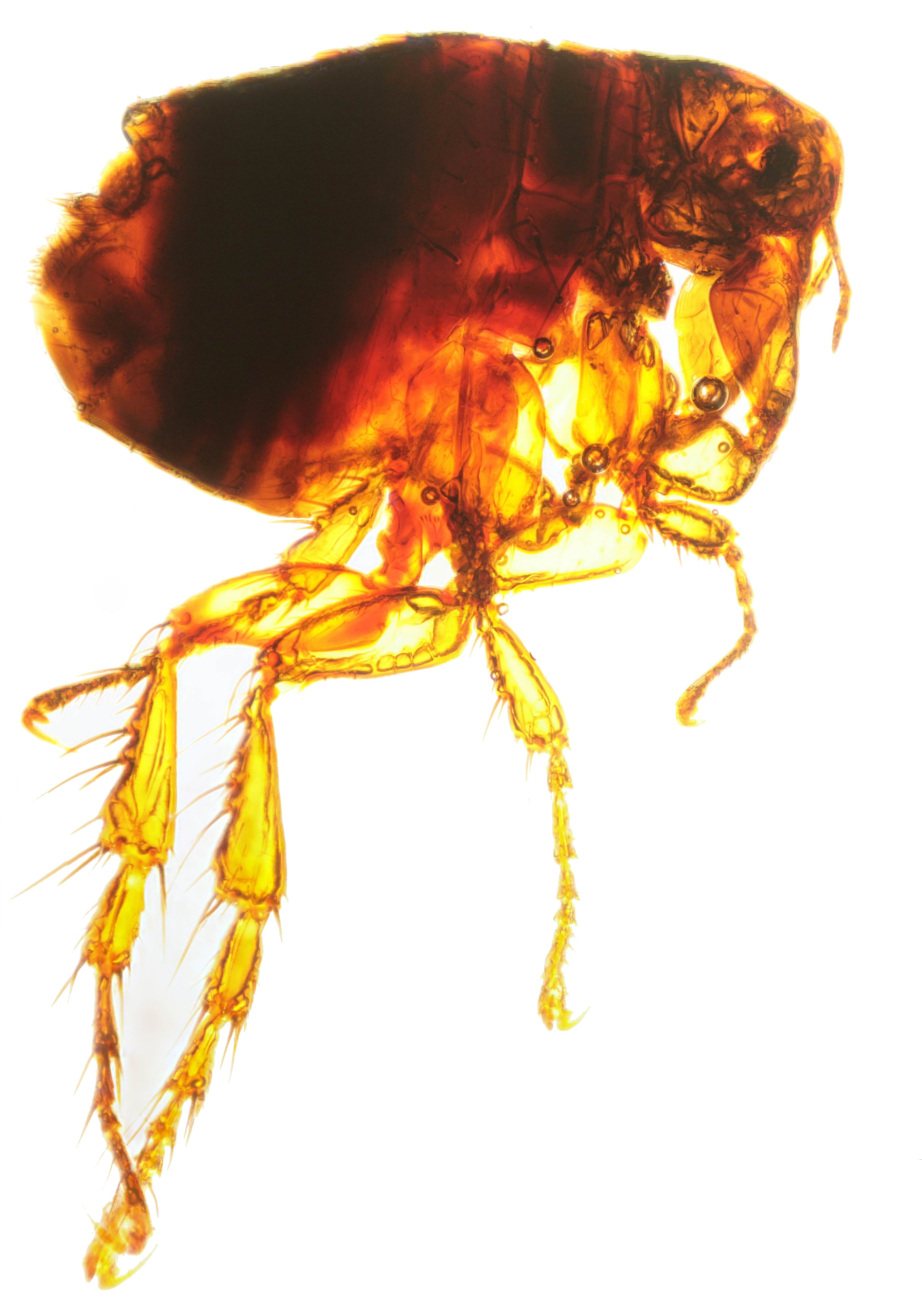With a microscope, there is always a trade-off between resolution and field of view. Using an objective lens that gets you more detail inevitably results in being able to view only a small part of the subject. You must move the subject around under the lens to see all of it.
With digital cameras and computers, we can get around this limitation. Just like you can use panorama software to stitch together a series of photographs of a day at the beach, we can use the same software to stitch together a series of photographs of different parts of the subject under the microscope.
When we use a low power objective, we can see large parts of the microscope slide under it. But low power objectives have low numerical apertures, and cannot resolve fine details.
Also, by trying to use the entire field of view, instead of only the center part that is in focus with affordable objectives, we see all of the flaws in the lens:
(Click on the images to see the full size view.)
So instead, let's use a higher power objective that can get a lot more detail, and use only the center portion of the image (by using extension tubes on our DSLR, or a higher power eyepiece if we are using a camera with a lens).
Then we take a photo, move the object under the scope, and take another. We keep doing this, taking shots row after row, column after column, until we have as much of the subject recorded in the camera as we need.
Be careful when you click on the image above, since it is almost 24 megabytes in size. It may take a few minutes to download. The image is 26498 pixels wide, and 11,219 pixels high. It is probably bigger than your monitor can display, so you will have to zoom in and pan around.
Notice that now everything is in focus from one edge to the other. When you zoom in, you get lots of detail that was not visible in the low power image.
If your printer can do 2400 pixels per inch, the print would be a little over 11 inches wide.
We can also combine this technique with the image stacking technique we discussed earlier.
(Click on the images to see the full size view.)
The photo above is built from four panels stitched together. Each panel was the result of stacking between five and a dozen images to get the full depth of field in the flea.
The image is 4108 pixels wide and 5866 pixels high. While that is only 24 megapixels, and your camera might be able to take a picture that size, the resolution we get by using a 40x NA 0.65 objective lens, and the depth of field we get by stacking, are things that the camera along could never capture.


